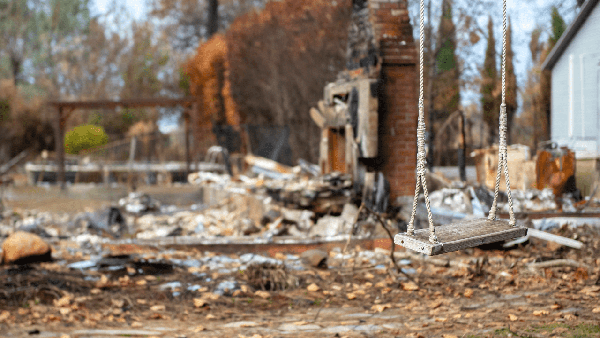The news from Lahaina over the past two weeks has been difficult to bear—more so for some of us in Northern California. In addition to the horror of witnessing the terrible loss of life and destruction on Maui, I’ve been experiencing painful flashbacks of the destruction of Paradise, California, by the Camp Fire of 2018.
I don’t want to diminish the suffering that is happening right now, and urge anyone who can help to do so. But for our purposes here, I want to briefly revisit what is now the second deadliest wildfire of the past century.
As experienced here in Sacramento, the Camp Fire, 90 miles to our north, was an immediate nightmare. For a week we walked around wearing N-95 masks to keep the crematory smoke out of our throats—the particulate bits of forests, homes, automobiles, hospitals and human ashes. The sky was a bleak gray, the sun an unholy red. It was a week of gloaming horror.
Every day the horror grew. Thirty-one dead and hundreds missing. Sixty-five dead; 650 missing. Seventy-one and 550. It felt wrong to be checking the box-score of death every morning and every evening but it was impossible not to.
Of course, a similar death-toll count has taken place over the past week or so, and in many reports it was a grim race. Will Lahaina surpass Paradise as the location of the bloodiest inferno? Of course, it did. Ultimately 84 people were killed by the Camp Fire, and as of this writing there are 114 confirmed fatalities on Maui.
Paradise and Lahaina have another tragic thing in common. Both of these disasters happened because the beautiful forestlands of Maui and California were destroyed by land-management practices that were misguided at best. These were not natural disasters; they were man-made events.
It's widely known that the extreme winds that drove both fires—an overheated jet stream in the Sierra foothills and a supercharged hurricane in Hawaii—are a product of human-caused climate change. There is another cause that is less well reported.
According to Elizabeth Pickett of the Hawaii Wildfire Management Organization, the megafires on Maui were caused in part because tens of thousands of acres of abandoned sugar plantations, which were covered in extremely flammable, non-native, grasses and shrubs, made the island a tinderbox. There was a somewhat similar situation just outside Paradise. The Camp Fire turned into a monstrous conflagration in an area of the Plumas National Forest that had been heavily logged in 2012, and was covered in highly flamable brush.
Even before the Camp Fire erupted, the State of California was in the midst of a multibillion-dollar project to radically change the way business is conducted in the woods. On Nov. 19, 2018, the California Forest Practices Task Force happened to be meeting here in Sacramento while the fire raged and the body count grew. I attended that meeting and several others since while following the work of the task force—a first-ever coming together of state, federal, local and tribal agencies that collectively are responsible for California’s forested land. It's now called the Wildfire and Forest Resilience Task Force, and we'll have more on that here later.



 One of many tableaus of destruction as seen on a tour of Paradise with Cal Fire on May 8, 2019, six months after the outbreak of the Camp Fire.
One of many tableaus of destruction as seen on a tour of Paradise with Cal Fire on May 8, 2019, six months after the outbreak of the Camp Fire.





